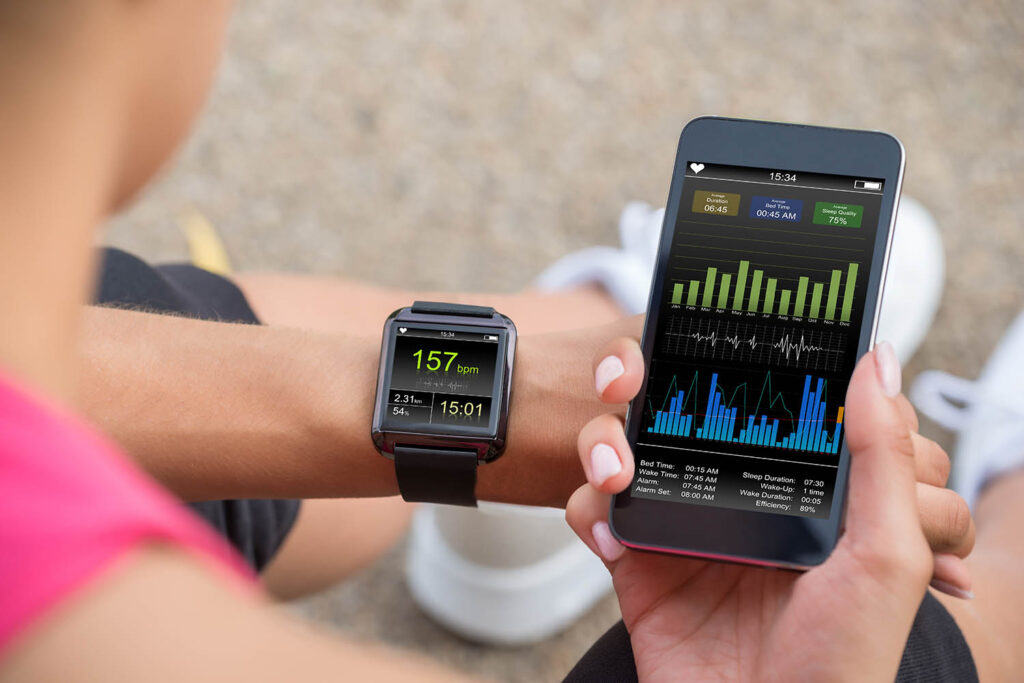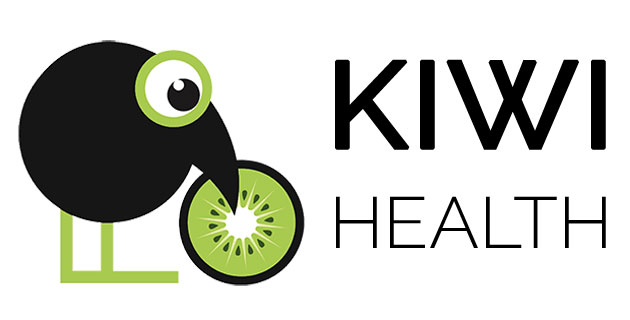Don’t worry, because that’s exactly what KIWI HEALTH is not – for good reason.
In this blog post I will explain why that is, why KIWI HEALTH was developed and why it is a desktop application for Windows PC.

The capabilities of apps should not be questioned
…but at least I allowed myself the questioning…
There are many apps for tracking health and fitness data, “as many as the sand on the beach”, so to speak. Numerous (or at least some of them) are really good. They serve their purpose, measure and collect data from different devices, exchange this data with each other and display the results. At first glance, this is sufficient for the vast majority of users. But apps, just like web apps, all have their limitations at some point in terms of their capabilities and functionalities.
This very fact already reveals the first “problems”. For one thing, there are simply too many apps, each one does what it can for itself, an app is included by every manufacturer of a device, or an account has to be created for a website. Further, none of this can handle and evaluate all available data. Even if I give all the approvals in Apple Health, at least the GPS tracking data from my Garmin golf watch falls by the wayside. So I’m forced to switch back and forth between apps and web apps to get a holistic view.
The limited capabilities of apps are also quickly demonstrated. What about a reasonable export, e.g. as Excel file, so that I can create an individual evaluation? Which app offers me the possibility to create a report as a PDF from a freely definable period of time, which I can take to the doctor, for example? How can I “overlay” values from different sources, i.e. display them simultaneously in a diagram, in order to compare them with each other?
In several blogs on the web you can find countless users asking themselves the same questions. And there are also some approaches that provide a solution. For example, the app “QS Access” creates a CSV export, and there are websites that return a CSV file from my uploaded Apple Health export as well. But what then? I need to continue to invest time and effort to get meaningful evaluations and adjust as more data is added.
At the end of the day, this was just way too cumbersome and insufficient for me….
Apple Health as a central data pool
With every new device I get, it’s important to me that the data I record is also sent to Apple Health. This means that there is at least one central point of contact when it comes to keeping track of things. To a certain extent, the evaluations offered are quite sufficient. And fortunately Apple Health also offers the possibility to export all data – but unfortunately in a not really understandable format, namely XML.
So far so good… you might think. I can view, evaluate and assess my data in one place and even export it.
“Quantified self” – insights about myself
What is my health and fitness status? How have my health scores evolved over time? How and where do I need to start to improve my training?
Early in my career as a monitor of my health and fitness data, the Apple Health app was perfectly adequate. I was pleased when the number of steps I walked increased from the previous week. The available charts, e.g. for my stair climbs, were descriptive and meaningful. However, the only data source available at the time was my iPhone.
Over time, more and more devices were added. And, of course, the right app or web application for each device. In the meantime, I am the proud owner of a Garmin golf watch, a WLAN-enabled scale and a blood pressure monitor from Withings, a Nautilus exercise bike and, last but not least, an Apple Watch that I love.
Accordingly, the collected data became more and more extensive, and it became more and more difficult to evaluate them in a reasonable way. After all, if I collect a lot of data, then I also have the right to benefit from it. I wanted to know more about myself, to recognize improvements (and of course also deteriorations) in my values, to look at progressions over long periods of time, to go into detail and to compare values of the same content from different devices.
Enough data to accomplish all this is available, after all.
The idea behind KIWI HEALTH
One of the things that bothers me about an app is not the app itself, but the “way too small” display on the phone. There is simply not enough space available on the display. And when I sit with my doctor, and he once again makes it clear to me how important a “normal” blood pressure is for a long life, I cannot show him that an improvement can certainly be noticed compared to the previous quarter, or that the medication should be readjusted due to a worsening of the values. Because I can’t create a PDF (printed or sent as an email) that clearly shows this comparison with any app.
It’s a good thing that I develop software for a living…
So I took a closer look at the export from Apple Health. In doing so, I quickly discovered that the data is in a structured and standardized form, regardless of the device or app from which it is transmitted to Apple Health. So all I had to do was read in the data and put it into a form that could be evaluated.
Unfortunately, there is no direct interface to Apple Health data. So that leaves a small but acceptable downer: exporting from Apple Health has to be done manually and made available as a ZIP file on my computer. Nothing more is required, even unpacking the ZIP file is done by KIWI HEALTH. And for the tracking data of my golf game there is also a solution: I can namely export these so-called GPX files via my Garmin website, store them in a folder on my laptop and then include this folder in KIWI HEALTH (by the way: this does not only work with Garmin, it is only important that the data is in GPX format).
Already I was at the point where I wanted to be.
I now have all the collected data from all devices and all other sources in one place. Without much effort. And that’s exactly where KIWI HEALTH came from, with all the advantages of a Windows application.
“Et voilà” – goal achieved
KIWI HEALTH is not intended to and does not replace apps. But extensively complement and expand by many missing options and functionalities.
For a “quick look” at one or another health value, I still use my iPhone and the corresponding app.
But when it comes to detail, printable reports, comparisons, simultaneous display of evaluations in multiple windows, handling a lot of data from different sources, and much more, I use KIWI HEALTH….
